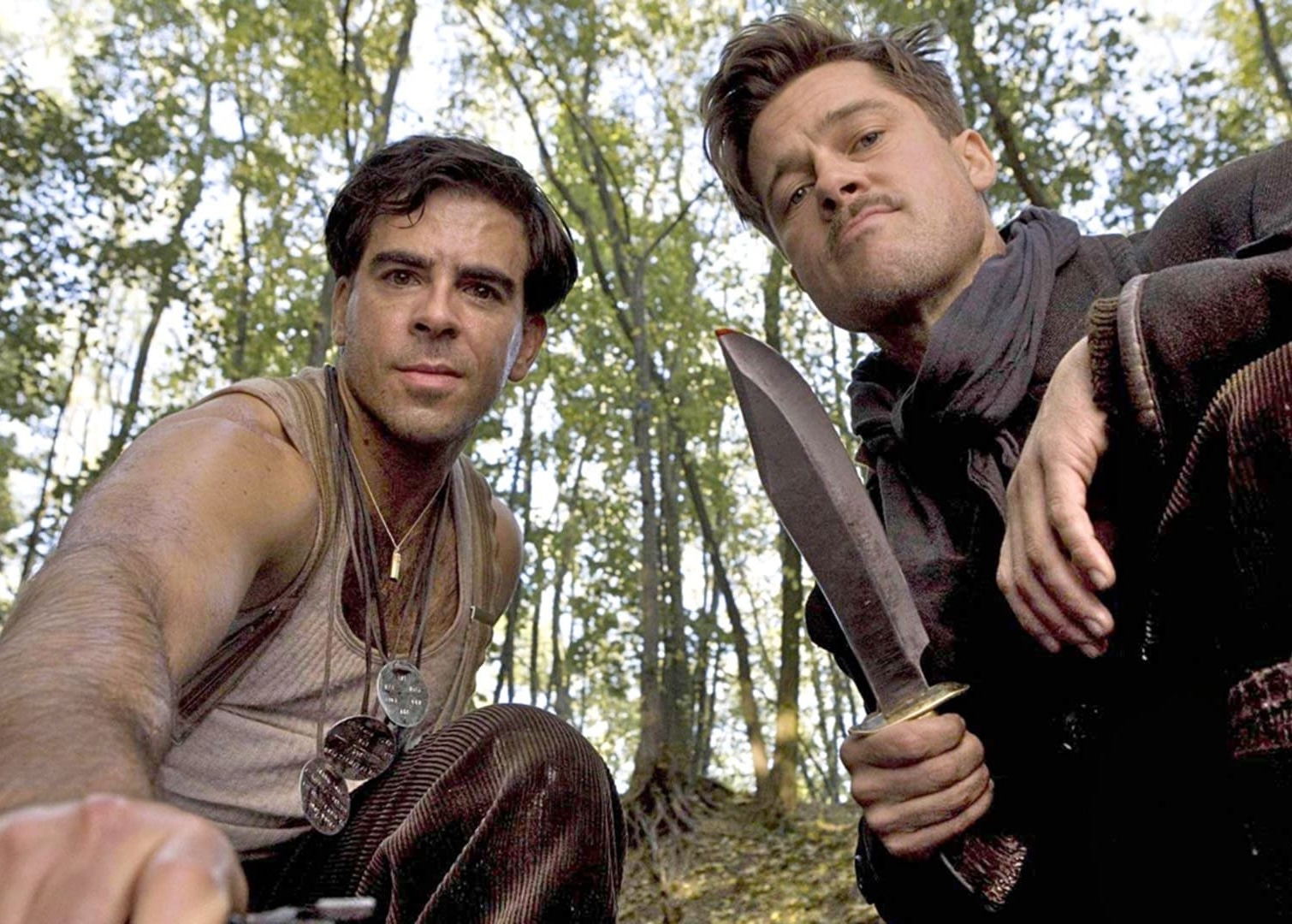A New Narrative for World War II
World War II has long been a favorite subject in cinema, with countless films depicting the horrors and heroics of the era. However, “Inglourious Basterds” stands apart from its predecessors by embracing an alternate history approach, offering viewers a version of events that is as exhilarating as it is fictional. Tarantino’s boldest move was rewriting the war’s end, imagining a world where a group of Jewish-American soldiers, led by the charismatic and ruthless Lt. Aldo Raine (played by Brad Pitt), succeed in assassinating Adolf Hitler and his high-ranking officials.
This fictional twist allowed Tarantino to explore themes of vengeance, justice, and the power of cinema itself. By altering the outcome of one of history’s most devastating conflicts, “Inglourious Basterds” invited audiences to reconsider the nature of history, the role of storytelling, and the cathartic potential of revenge. This revisionist take on history was both controversial and groundbreaking, challenging the conventions of the war genre while offering a fresh perspective on one of the most well-documented periods of the 20th century.

Tarantino’s Career-Defining Moment
For Tarantino, “Inglourious Basterds” was more than just another film—it was a career-defining project that showcased his evolution as a filmmaker. Known for his sharp dialogue, eclectic soundtracks, and a penchant for violence, Tarantino had already established himself as one of Hollywood’s most distinctive directors. Yet, with “Inglourious Basterds,” he reached new heights, both in terms of storytelling and visual style.
The film’s narrative structure, divided into distinct chapters, each with its own tone and style, allowed Tarantino to experiment with pacing and character development. The tension-filled opening scene, where SS Colonel Hans Landa (Christoph Waltz in an Oscar-winning performance) interrogates a French dairy farmer, is a masterclass in building suspense. This scene alone encapsulates Tarantino’s ability to blend humor, horror, and tension, creating a cinematic experience that is as unpredictable as it is gripping.
Furthermore, “Inglourious Basterds” marked a turning point in Tarantino’s approach to filmmaking. The film was meticulously crafted, with every scene, line of dialogue, and musical cue serving a purpose. Tarantino’s love for cinema is evident throughout the film, particularly in the climactic scene set in a movie theater, where film itself becomes a weapon of war. This meta-cinematic moment reinforces the idea that cinema has the power to shape reality—or at least, our perception of it.
Blending History and Fiction
One of the most intriguing aspects of “Inglourious Basterds” is its seamless blend of historical fact and fictional narrative. Tarantino’s film is filled with references to real events and figures, from the Nazi propaganda films to the infamous “Jew Hunter” character, loosely inspired by real-life figures. Yet, the film never pretends to be a historical account. Instead, it revels in its fictional nature, using history as a backdrop for a larger-than-life tale of revenge and redemption.
This blending of fact and fiction is most evident in the character of Shosanna Dreyfus (played by Mélanie Laurent), a Jewish woman who narrowly escapes the clutches of Hans Landa and later plots her own revenge against the Nazis. Shosanna’s story, while entirely fictional, is imbued with the weight of real historical trauma, making her final act of defiance both symbolic and emotionally resonant.
Tarantino’s approach to history in “Inglourious Basterds” raises important questions about the role of cinema in shaping our understanding of the past. By rewriting history, the film challenges viewers to think critically about the narratives we are told and the ways in which they are constructed. It also underscores the idea that history is not just a series of events, but a collection of stories, each with its own perspective and interpretation.

Legacy and Impact
Fifteen years after its release, “Inglourious Basterds” remains a significant film in both Tarantino’s oeuvre and the broader cinematic landscape. Its influence can be seen in the wave of revisionist historical films that followed, as well as in the continued popularity of Tarantino’s distinct style. The film’s success also cemented Tarantino’s status as a filmmaker who is unafraid to take risks and challenge the norms of the industry.
Moreover, “Inglourious Basterds” has had a lasting impact on the war film genre, demonstrating that even the most well-trodden historical subjects can be reinterpreted and reimagined in new and exciting ways. The film’s mix of high drama, dark humor, and explosive action has inspired countless filmmakers to push the boundaries of genre and narrative, creating works that are as innovative as they are entertaining.
As we look back on “Inglourious Basterds” fifteen years later, it is clear that the film is more than just a stylish action flick—it is a bold statement about the power of storytelling and the endless possibilities of cinema. In reshaping the narrative of World War II, Tarantino not only paid homage to the films that inspired him but also carved out a place for his own unique vision in the annals of film history. “Inglourious Basterds” stands as a testament to the enduring appeal of cinema’s ability to rewrite the past, one reel at a time.









